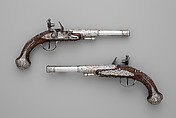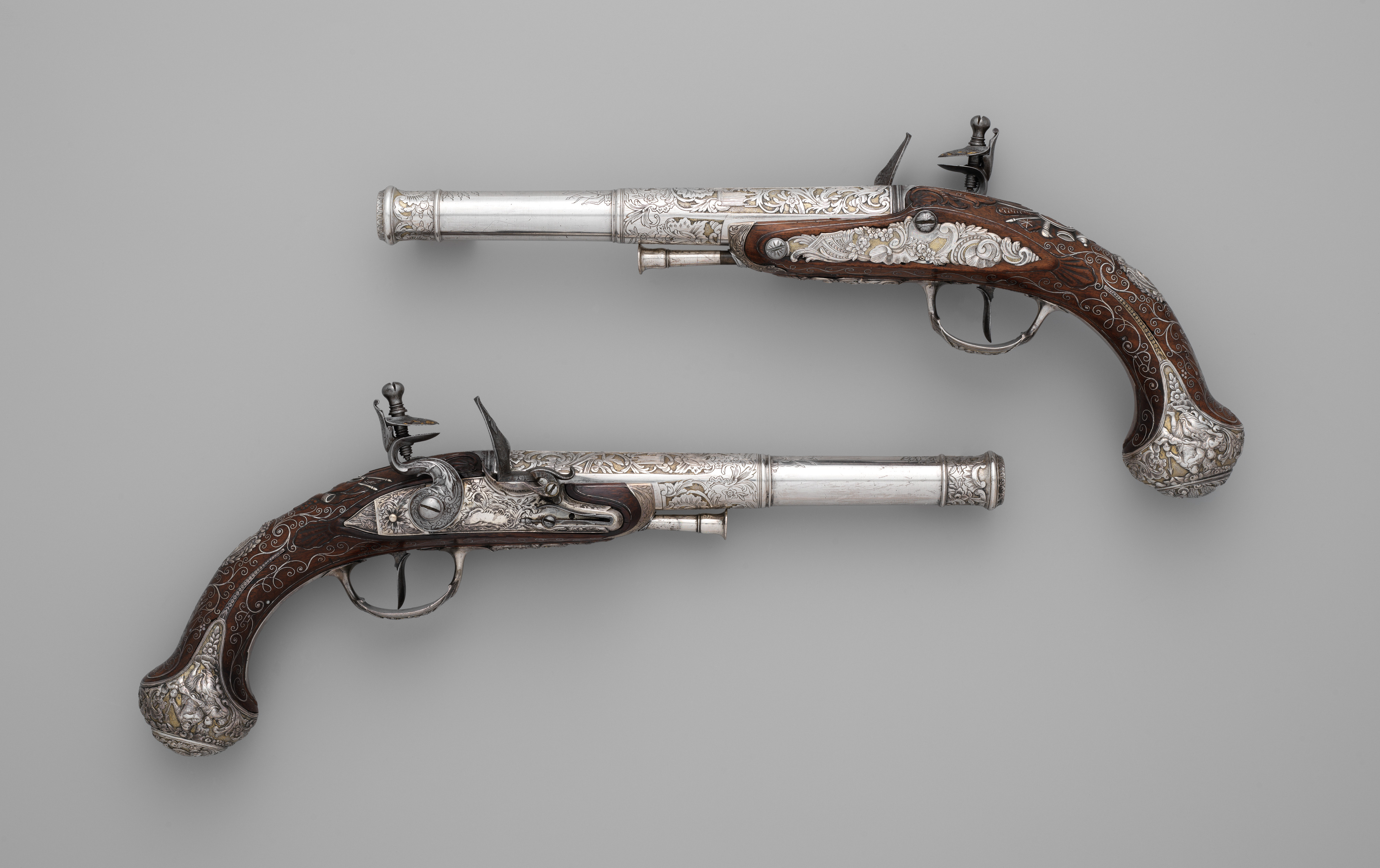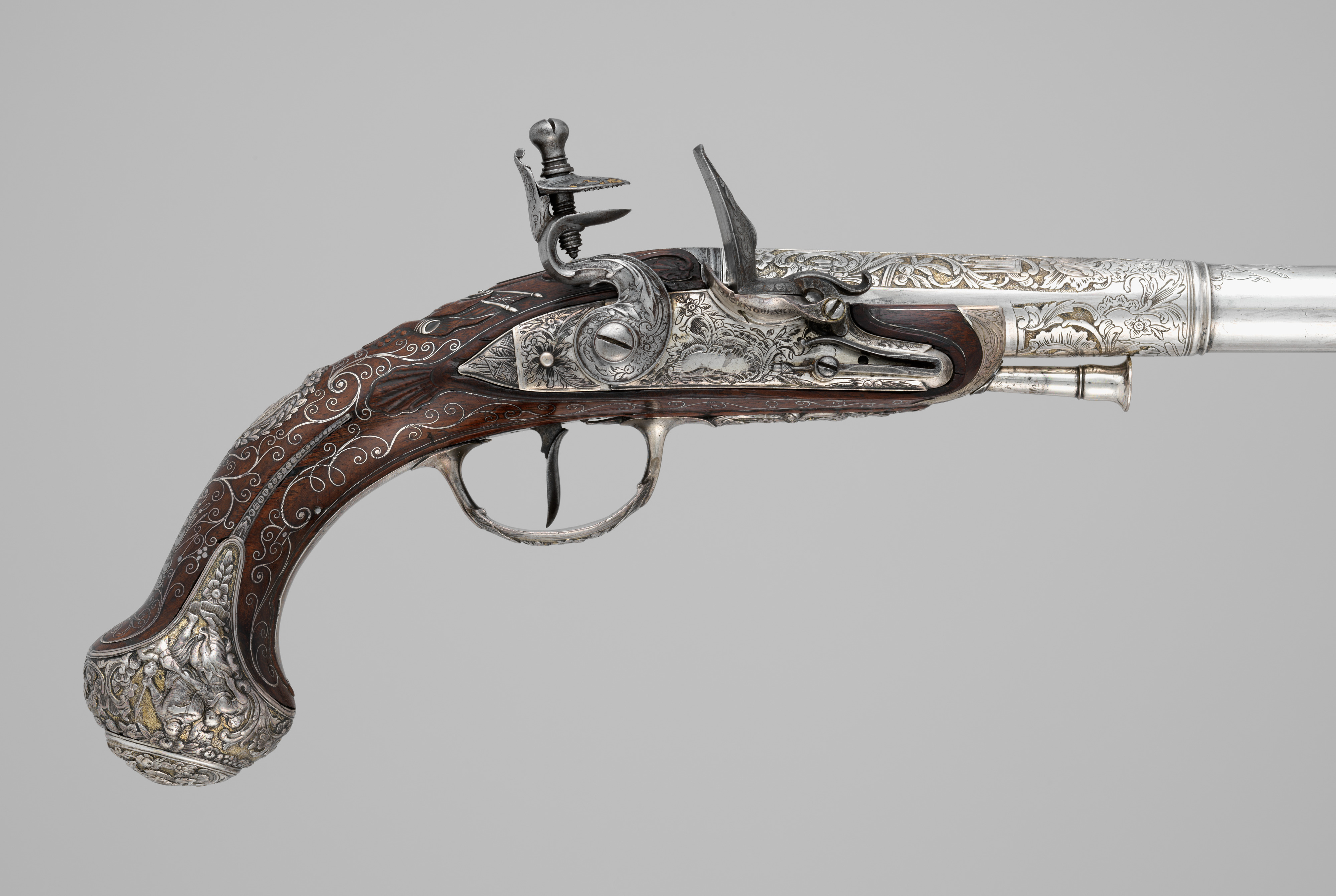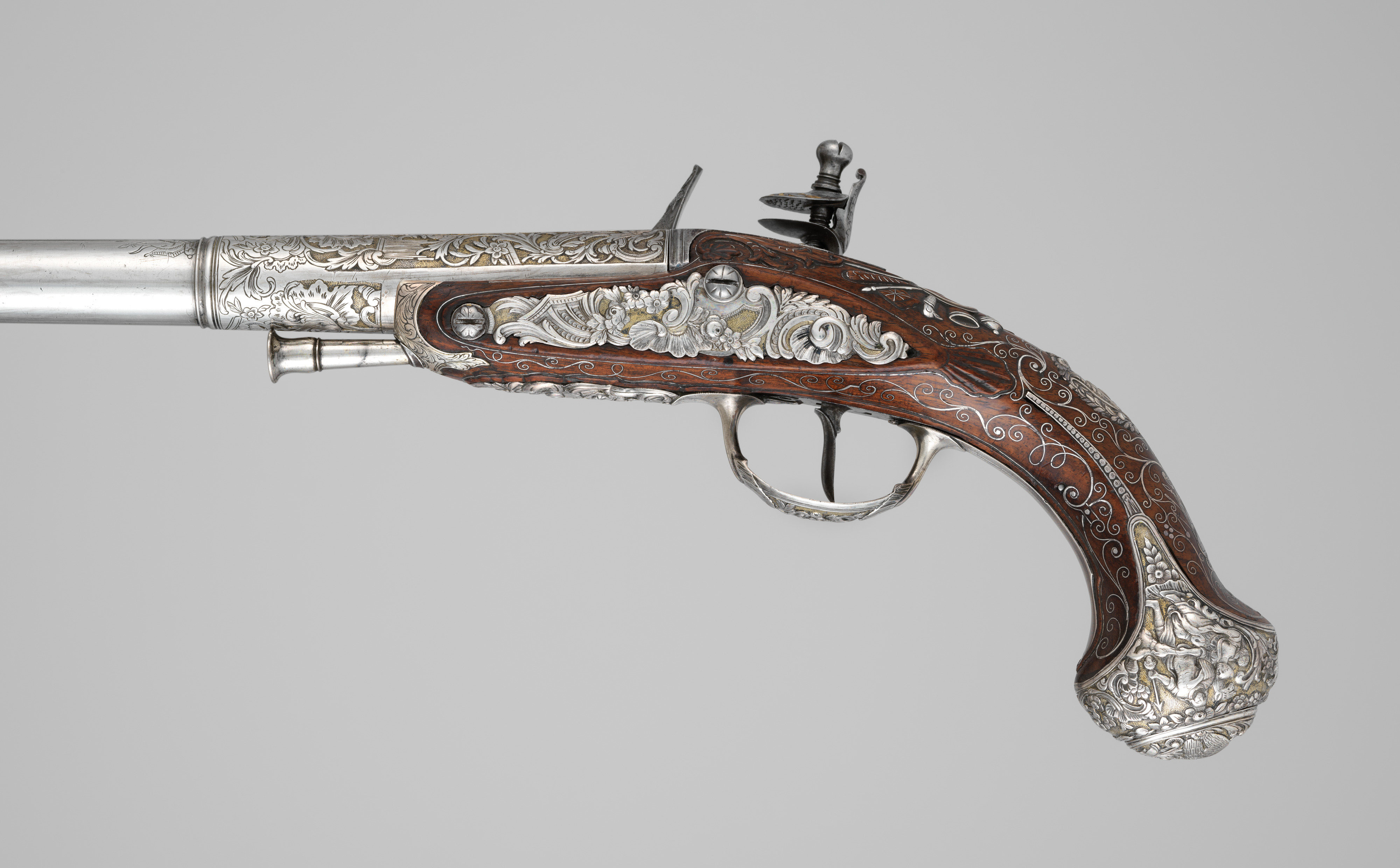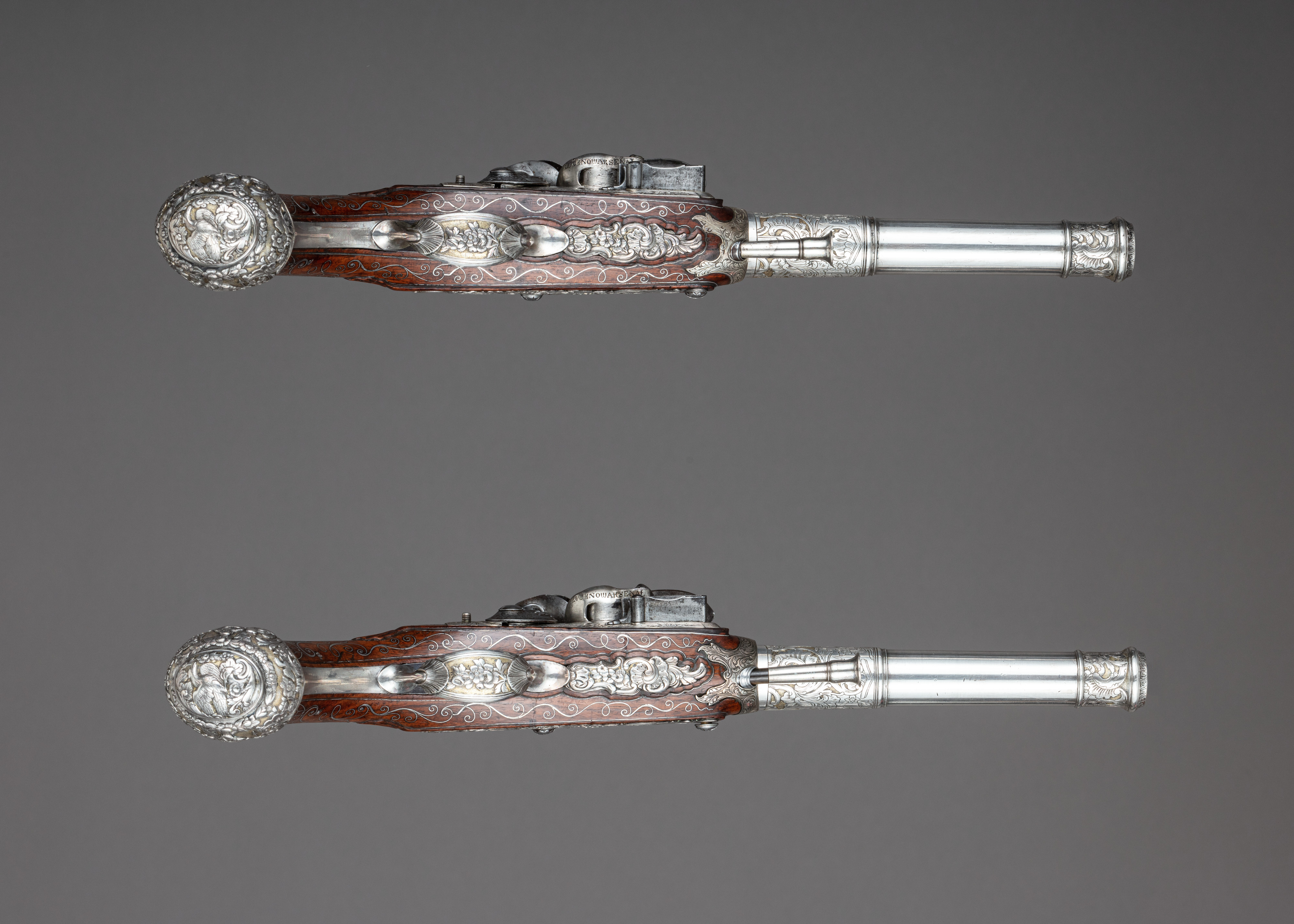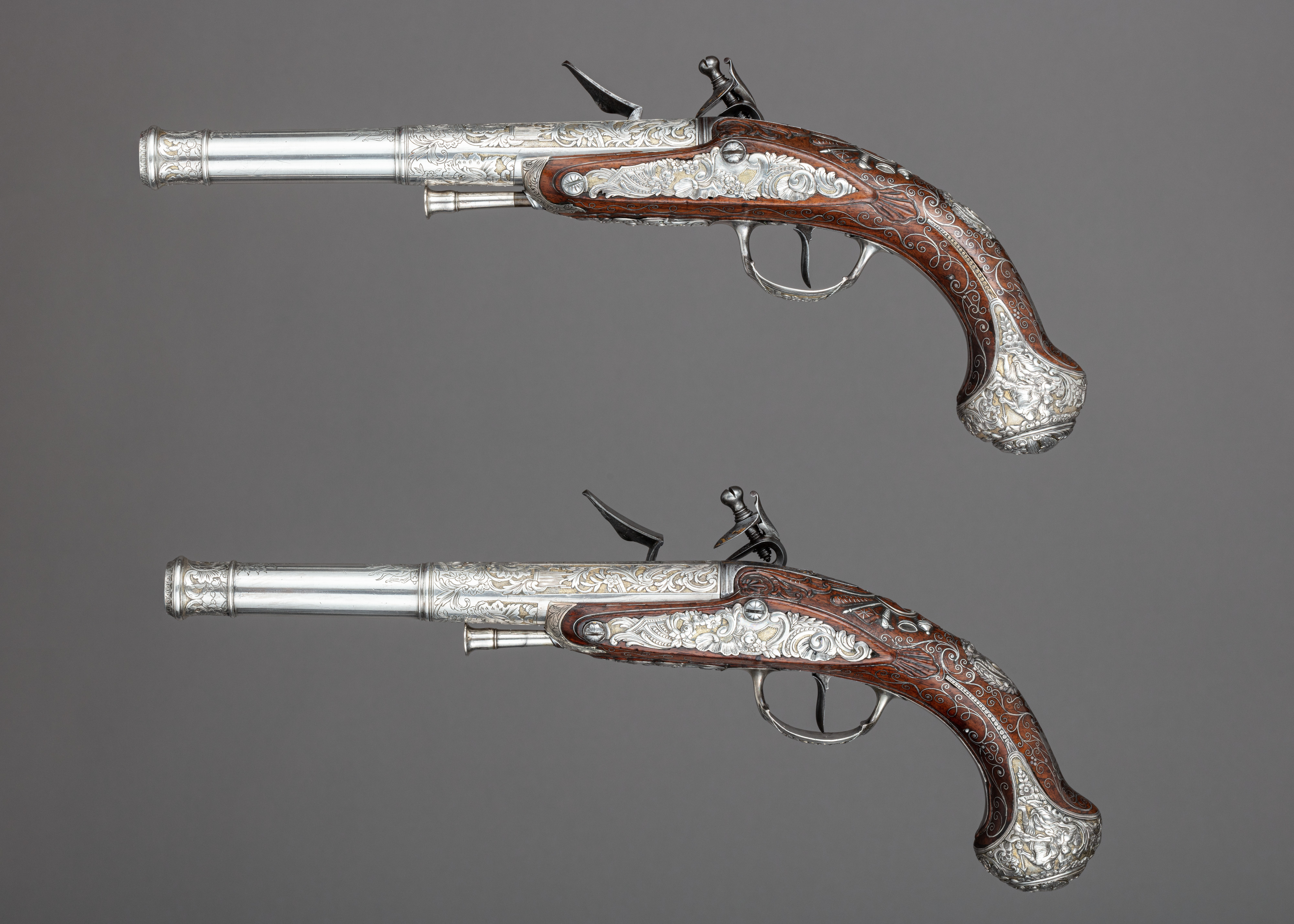Pair of Flintlock Pistols
Patron Claude Martin
Not on view
These pistols bear markings indicating they were made in the Arsenal at Lucknow, India, under the direction of Arsenal Superintendent Claude Martin, who oversaw the production of firearms by Indian craftsmen there from 1776 until his death in 1800. While many luxury arms of this period include finely decorated mounts and inlay of silver and gold, these pistols are extraordinary for having, in addition to those features, solid silver barrels and lock-plates. The cock, steel, trigger, steel spring, and internal components of the lock are the only metal parts of the pistols made of steel.
Martin, the French polymath, inventor, intellectual, bibliophile, architect, adventurer, art patron, investor, and soldier, held various military and administrative positions under the British in India since he was twenty-five years old. Born in Lyon, France, he defected to the British forces during the siege of Pondicherry in 1760, thereafter steadily climbing through the ranks of the British military, fostering close ties to the Nawab of Awadha and befriending influential politicians, artists, and merchants, and in the process amassing a considerable personal fortune. For decades, Martin’s control of the Arsenal allowed him to dominate the lucrative arms trade in the region. At its peak, it employed seventy-five specialized workmen, producing pistols and sporting guns and other personal firearms, as well as cannons and mortars.
Of presentation quality, the Museum’s pistols are comprehensively embellished. The undersides of the pans are engraved LUCKNOW ARSENAL, and the smooth-bore cannon-style barrels of cast silver are engraved L.COL.CLAUDE.MARTIN. Martin held the rank of Lieutenant Colonel from 1782–96, indicating that the pistols date to this period. All firearms made in the Arsenal under Martin were inscribed with his name and rank at the time of their production; the marks are not an indication of personal ownership.
The identity of the pistols’ original owner has remained a persistent question among scholars for decades. A prevailing theory supported by the pistols’ provenance from the collection of the Lords Braybrooke at Audley End House in Essex as well as pieces of circumstantial evidence is that Martin presented the pistols to Governor-General, Lord Cornwallis (1738–1805) upon his visit to India in 1786. The survival of a nearly identical pair of pistols complete with a case bearing the initials and crest of Martin’s friend General Alexander Ross (1742–1827), aide-de-camp to Governor-General, Lord Cornwallis, retained within the Ross family until 2012, suggests that if Martin presented identical pairs to both men, the Museum’s pistols could be the Cornwallis set.
Though the Martin pistols bear Lucknow markings, the existence of a pair of silver-barreled, silver-locked holster pistols with identical mounts made in London by the gunmaker Joseph Heylin (1730–1801) at least thirteen years earlier and decorated in a manner nearly identical to the Martin pairs calls into question whether the Martin pairs may have in fact been made in whole or in part in London and then marked to appear as if made entirely in Lucknow (for the Heylin pair, see J. F. Hayward, The Art of the Gunmaker, v. 2, 1660 - 1830 (London, 1963), pp. 203-4, 341, pl. 65). Though it remains an open question, the wood used for the stock of the Martin pair—either a padauk or rosewood of medium quality—and the quality of the their decorative finishes compared to the Heylins suggests that the Martin pair was indeed made entirely in or at least finished in Lucknow, following the pattern of the Heylin pistols and using mounts (or their molds) that were at the time over ten years old.
This image cannot be enlarged, viewed at full screen, or downloaded.
This artwork is meant to be viewed from right to left. Scroll left to view more.
